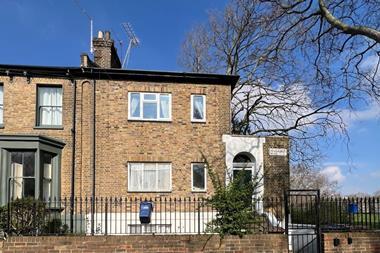Auctions have always been a staple part of property and of this very magazine.

But they’re also popular in telecoms where the regulator is preparing to sell high frequency airwaves previously used by the Ministry of Defence to boost 4G networks. This will help satisfy our insatiable demand for mobile data usage, estimated to be growing at 80% a year.
While the Treasury is eyeing up the £1bn bounty this should generate, many are focused beyond this to next generation 5G networks. These will have profound effects on how we live for a number of reasons.
The rapid expansion of smartphones is driving demand for mobile data. The University of Surrey reports that demand is predicted to grow by 100 times over the next decade. The internet of things (IoT), or the connected web of machines that could range from automated fridges and security sensors, to public lighting and driverless cars, will transform how we live and how places are designed.
Emerging technology will put increasing demands on the airwaves. We’ve all experienced the frustration of buffering when you click on a map, but having instant connectivity will become a crucial part of functioning places. To do this will require considerable infrastructure at the heart of any regeneration.
As part of creating a new smart city for Manchester’s centre, this is one of the key challenges we are looking to overcome at Noma, which will boast an array of restored heritage buildings and new-build designs. The site was the home of the world’s first steam-powered mill and the heart of England’s industrial revolution, so it’s fitting that it should be a beacon for technology advancement now.
Put into context, 5G will be up to 66 times faster than current 4G, enabling its users to download a 800MB movie in just one second.
5G’s greater capacity will enable an unlimited number of connections to be made so that any type of object, infrastructure or device can be connected to the internet. By 2020, it is predicted that between 25 and 50 billion devices will be connected to the internet, encompassing conventional devices, wearables and parts of the urban environment.
This could overhaul the way we view public squares and outdoor spaces along with housing and retail space. Billions of sensors will be built into inanimate objects, technological devices, security systems, cars, buildings, roads and restaurants. These sensors will feed the information they collect back to laptops, smartphones or smart cars in real time.
This will provide an opportunity for properly connected smart cities to help us achieve everyday tasks such as finding a table at a restaurant or receiving live updates to see the number of free seats on a train.
The connectivity of streets and buildings as much as devices and workspaces is crucial to designing smart cities. Spaces where people can work and socialise digitally can now be created outside the built environment.
A focus of the investment will be to reduce 5G’s latency - the lag time between an action and a response - helping avoid coverage dropouts. After all, a drop in coverage when streaming a video is a minor inconvenience; the same happening on a major road with driverless cars is something else.
Still, 5G’s unprecedented speed and capacity is set to open intriguing new options. Smart homes, smart cars and smart devices will be faster and require less energy to operate. If a city can accomplish this, 5G could be the vehicle for drastic digital change.
David Pringle is director of Noma at the Co-operative Group





























No comments yet